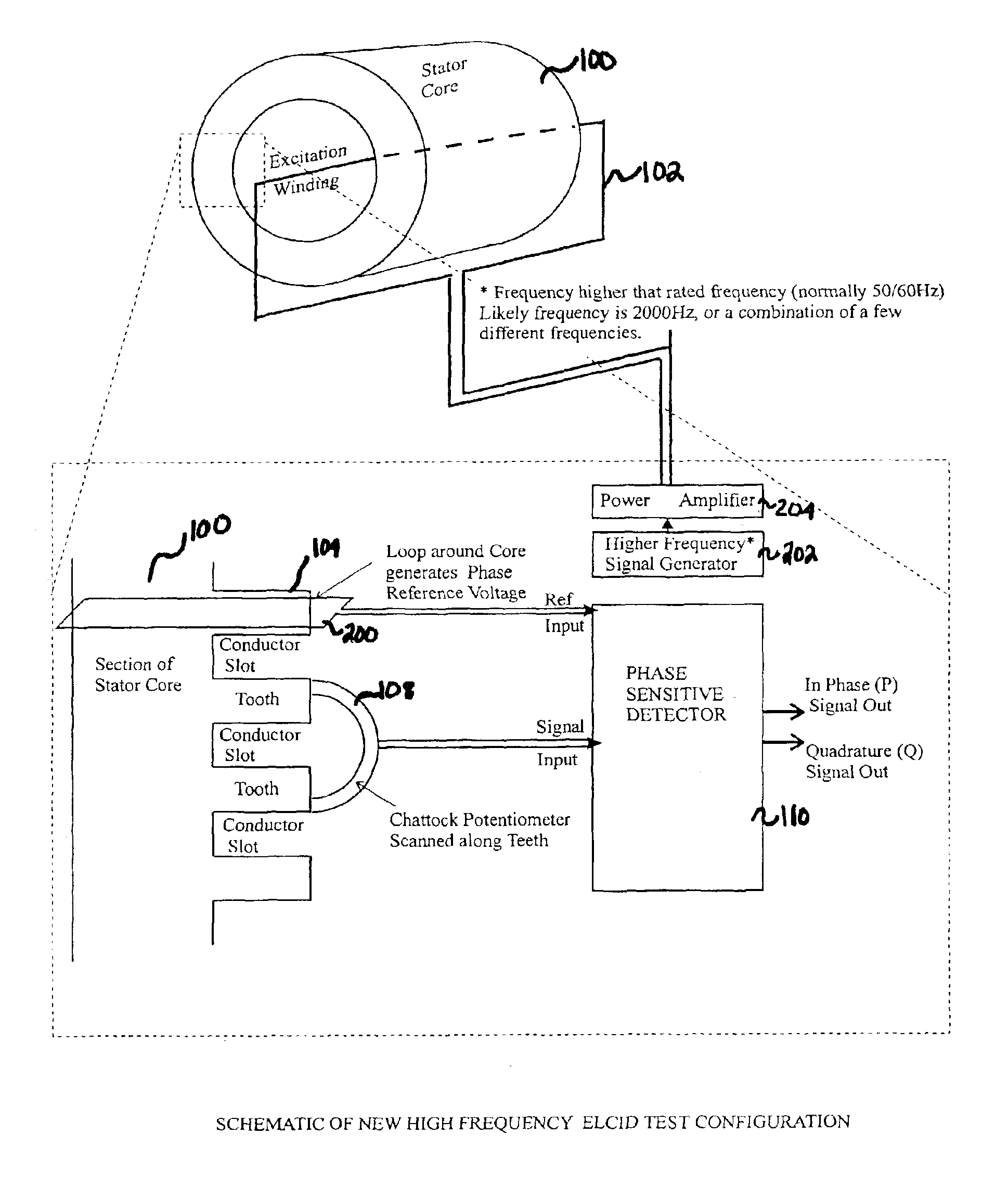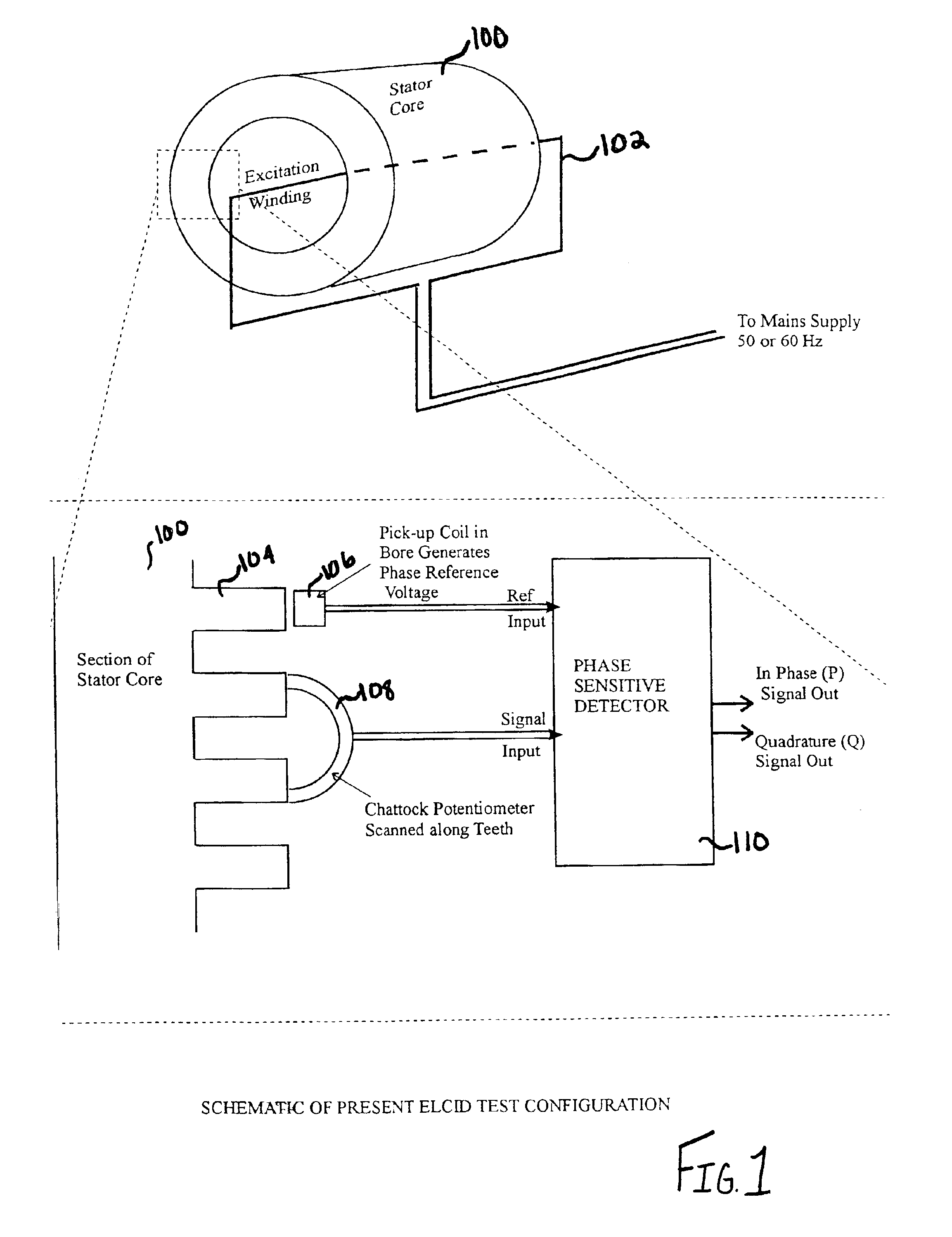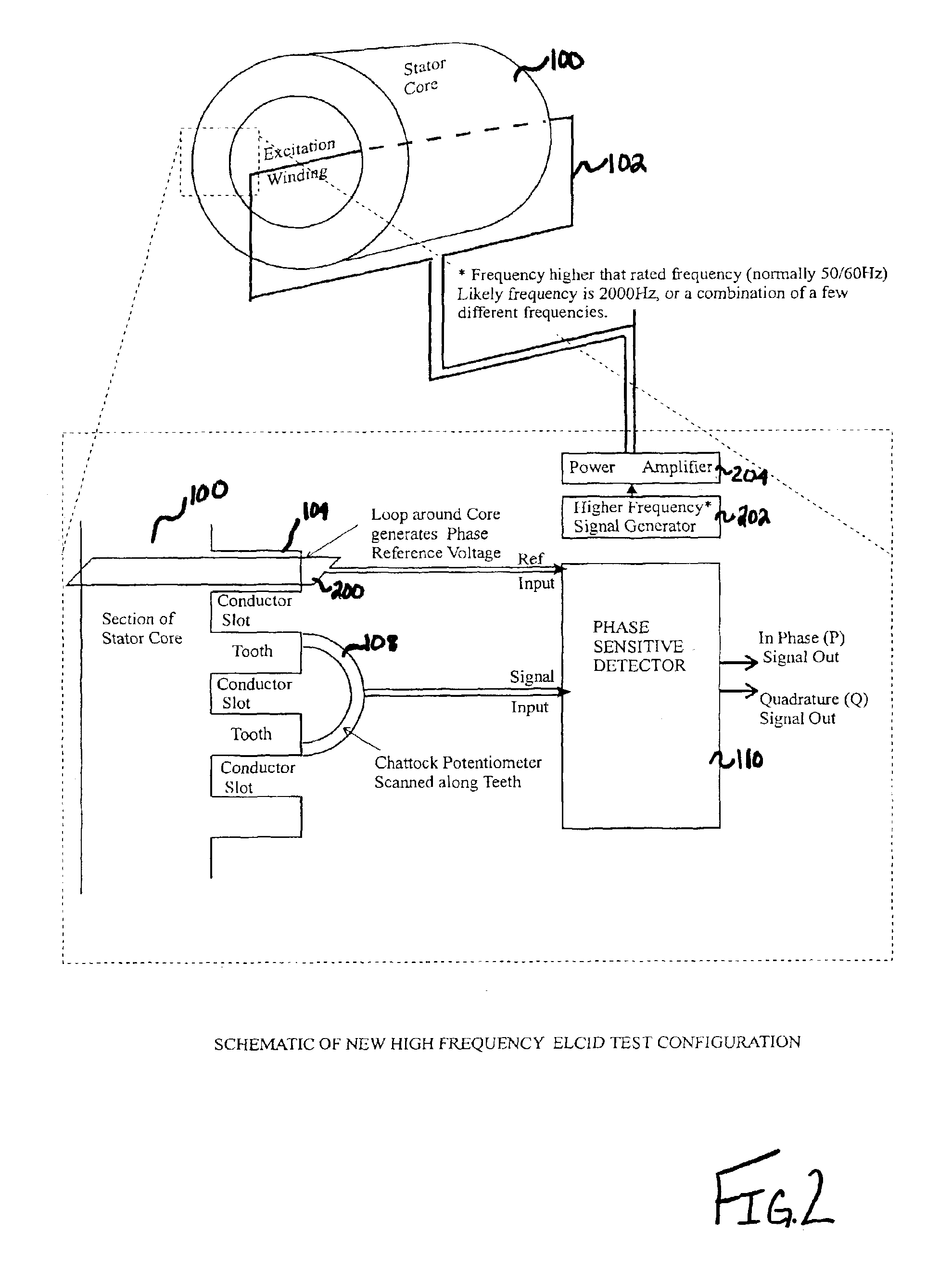Method and apparatus for testing laminated cores of electrical machines
- Summary
- Abstract
- Description
- Claims
- Application Information
AI Technical Summary
Benefits of technology
Problems solved by technology
Method used
Image
Examples
Embodiment Construction
[0028]FIG. 1 shows a schematic of a typical known Electromagnetic Core Imperfection Detection (ElCID) test arrangement. This particular ElCID arrangement includes a laminated stator core 100. The stator core 100 is made up of layers of thin steel and insulation as is known. In large turbogenerators and some hydrogenerators, the stator core 100 is built up from layers of laminations which overlap all around the core. Many large hydrogenerator cores, however, are formed from two or more sectors, each built up from overlapping laminations, and the sectors are assembled on site. Small gaps therefore occur between where the sectors are joined. In use, a rotor (not shown) passes through the centre of the core 100. Typically during test, however, the rotor may be removed and an inserted excitation winding 102 passes through the centre of the core 100. However, as noted previously the stator 100 may be tested whilst the rotor is in place. It is also to be noted that key bars (not shown) whi...
PUM
 Login to View More
Login to View More Abstract
Description
Claims
Application Information
 Login to View More
Login to View More - R&D
- Intellectual Property
- Life Sciences
- Materials
- Tech Scout
- Unparalleled Data Quality
- Higher Quality Content
- 60% Fewer Hallucinations
Browse by: Latest US Patents, China's latest patents, Technical Efficacy Thesaurus, Application Domain, Technology Topic, Popular Technical Reports.
© 2025 PatSnap. All rights reserved.Legal|Privacy policy|Modern Slavery Act Transparency Statement|Sitemap|About US| Contact US: help@patsnap.com



